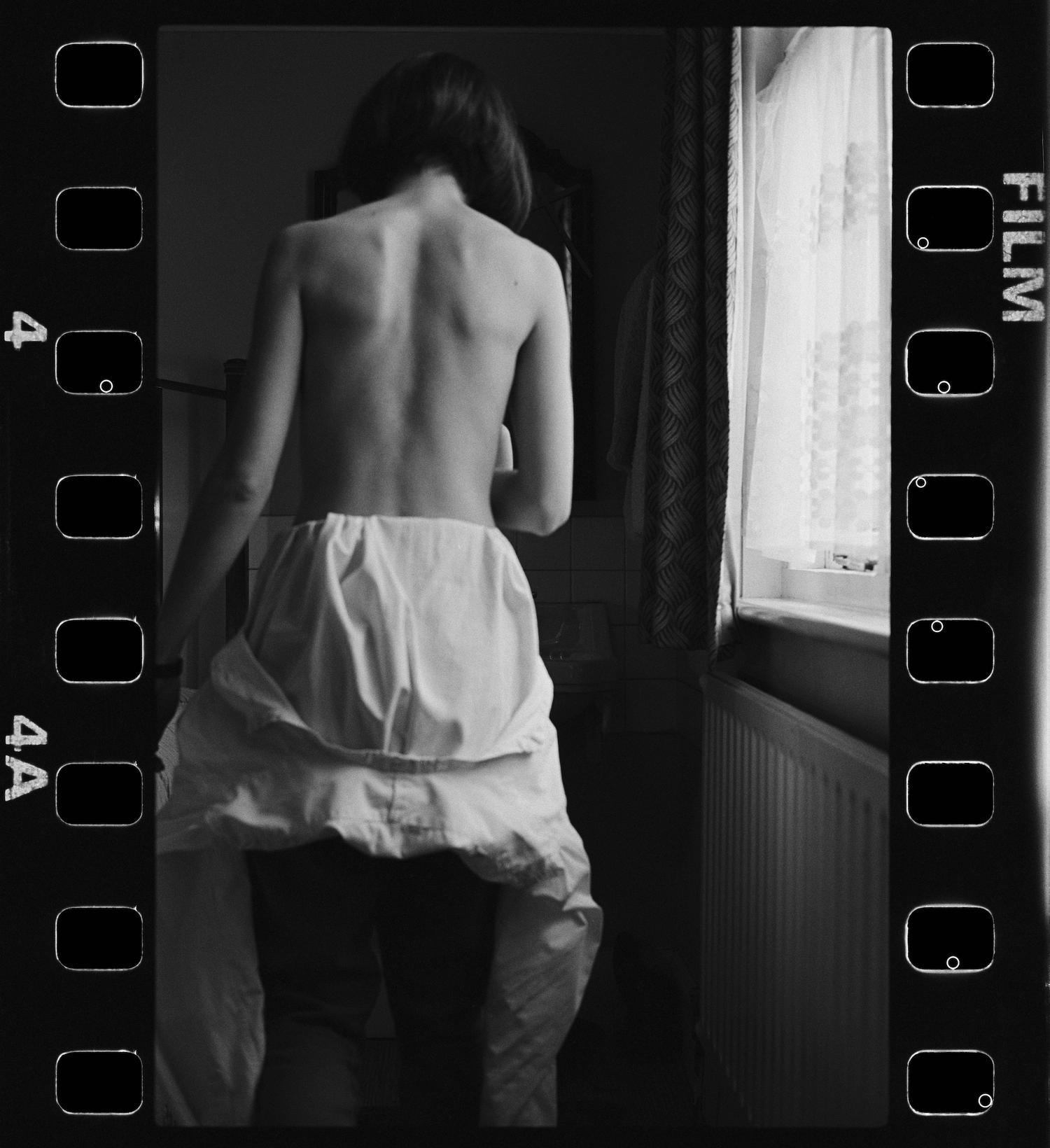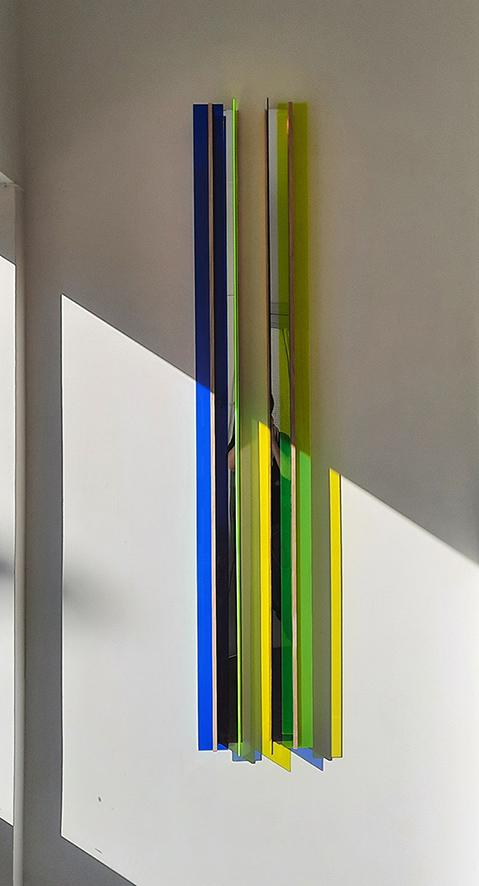On Queering Minimalism

‘The marrow in my spine is a thin thread of light and it bites at the root of my back.’ Jyll Bradley
You have turned your back to us, revealing the structures that form your body. I trace my finger down the furrow that marks your spine, the structure of your being, the form that keeps you upright, that braces you against weather and insult, against high winds and trying times. Unseen, ribs branch from the central column like fingers caged around precious cargo, not holding too tight or too loose, but perfectly placed to offer support and security.
Inside your childhood greenhouse, fresh shoots push through their damp compost beds and unfurl into the warm dappled light. Tomato vines are trained onto their own bamboo spines and flowers bud between broad courgette leaves. And there you are, sitting on the floor, watching it all, feeding on the light, still growing as you will continue to do for all your years to come.
You set up the camera to take your photo again but at the last minute you turn away, leaving your shoulder behind as you turn inwards. You want to be seen but you’re not quite sure who you are, who you’d like to be. This feels right. Maybe not everything needs to be revealed and maybe hiding reveals more than people think.
In the studio, you devise a new kind of self-portrait, of self-exploration. Coloured plastic and smooth timber grafted together, into a chorus of the letter ‘I’. Each grafted ‘I’ echoing the line of your backbone, the height of your body. Fusing different elements from life to form one whole. A body that is solid and ideas and identity that remain difficult to grasp. Reflections that play across the wall, that come from nothingness and dance their way back into it again.

